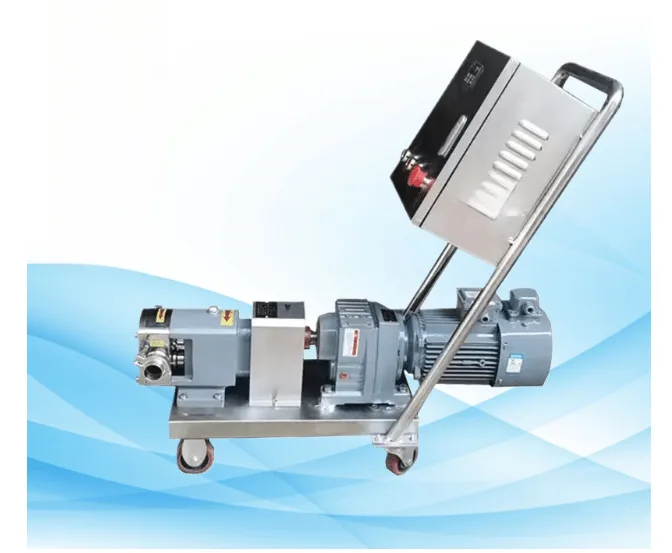How a Lobe Pump Works: A Complete Guide for Beginners
Lobe pumps have become a cornerstone in industries requiring sanitary, gentle, and efficient fluid handling. Whether you’re new to fluid transfer systems or simply curious about how these mechanisms operate, understanding the inner workings of a lobe pump can help you appreciate its role in sectors ranging from pharmaceuticals to food processing. Unlike conventional pumps, lobe pumps offer unique advantages that stem from their rotor design and precise engineering.
A lobe pump uses a positive displacement mechanism to move fluids, making it ideal for handling viscous, shear-sensitive, or abrasive substances. If you’re exploring pump options for hygienic or industrial applications, this lobe pump technology provides both durability and consistent performance. In this guide, we will break down how a lobe pump operates, its components, applications, and tips to ensure its optimal use.
Understanding the Basic Mechanics of a Lobe Pump
At its core, a lobe pump operates using two rotors—called lobes—that rotate in opposite directions within a casing. These rotors create cavities that trap and transfer the fluid from the inlet to the outlet. Because the lobes do not touch each other or the casing, the pump can handle delicate and highly viscous fluids without causing damage.
Each lobe is synchronized by external timing gears, which ensures there is no direct contact between them. This non-contact movement results in low wear and tear and makes the lobe pump suitable for hygienic applications. The precise clearance between the lobes and casing allows efficient fluid transfer with minimal pulsation or product degradation.
Key Components That Make It All Work
A lobe pump comprises several critical parts that contribute to its functionality. The rotors (lobes) are the primary moving elements that drive fluid from the suction side to the discharge side. The pump casing encases these rotors and directs the flow through the internal chambers, while the timing gears ensure synchronized rotation.
Mechanical seals or gland packings are used to prevent leakage, and the drive shaft, usually connected to a motor, supplies the rotational energy. The materials used in construction—such as stainless steel or elastomers—are selected based on the application’s needs, especially when sanitary standards are involved.
The Flow Dynamics Inside a Lobe Pump
The way a lobe pump moves fluid is both simple and elegant. As the lobes rotate, they create expanding cavities at the inlet, which allows the liquid to flow in. Once trapped between the lobes and the casing, the liquid is carried around the casing and pushed toward the outlet. This process is continuous and provides a steady, non-pulsating flow.
One of the notable characteristics of this pump is that the fluid never passes between the lobes. Instead, it moves around them, minimizing shear and maintaining the product’s integrity. This feature is particularly valuable when dealing with fragile or shear-sensitive substances like creams, gels, or slurries.
Applications Across Different Industries
Lobe pumps are widely used in industries where cleanliness and gentle handling are critical. In the food and beverage industry, they transfer substances such as yogurt, syrup, or chocolate without affecting their consistency or quality. In the pharmaceutical sector, their sanitary design makes them ideal for transporting creams, ointments, and even blood products.
The chemical industry benefits from their ability to handle corrosive and viscous fluids, while cosmetic manufacturers rely on lobe pumps to transport lotions, gels, and pastes. The adaptability of the lobe pump to various viscosities and sensitivity levels makes it a versatile tool in modern manufacturing processes.
Advantages That Set Lobe Pumps Apart
Several advantages make lobe pumps a preferred choice over other positive displacement pumps. The non-contact design significantly reduces wear and maintenance costs. Their ability to run dry for short periods adds flexibility in operational scenarios where product flow may momentarily stop.
Another notable benefit is their ease of cleaning. Most lobe pumps are designed for clean-in-place (CIP) and sterilize-in-place (SIP) operations, which is crucial for industries that require stringent hygiene standards. Their gentle pumping action reduces product damage, making them ideal for high-value and sensitive fluids.
How to Ensure Optimal Performance
To get the best out of a lobe pump, regular maintenance and proper operation are essential. While they are robust, routine inspection of seals, rotors, and timing gears helps in detecting wear or misalignment early. Lubricating the timing gears and checking for any unusual noises or vibrations can prevent costly downtime.
It’s also important to match the pump specifications with the nature of the fluid being handled. Viscosity, temperature, and pressure requirements should align with the pump’s capabilities. Installing the pump in the right orientation with adequate inlet and outlet piping ensures a smooth and uninterrupted flow.
Common Challenges and Their Solutions
Even though lobe pumps are reliable, they are not immune to operational challenges. One common issue is cavitation, which occurs when there’s insufficient fluid at the suction side. This can lead to reduced efficiency and even rotor damage. To prevent this, maintaining a steady fluid supply and avoiding sharp bends in suction piping is essential.
Seal leakage is another concern, often resulting from improper alignment or wear. Using high-quality mechanical seals and regularly inspecting them can mitigate this risk. Excessive noise or vibration usually indicates rotor misalignment or bearing failure, both of which require immediate attention to prevent further damage.
Innovations in Lobe Pump Technology
Modern advancements have significantly improved lobe pump efficiency and usability. Today’s pumps often feature smart monitoring systems that track performance metrics in real time. These sensors help operators identify wear patterns and maintenance needs before they become serious issues.
Materials science has also played a role, with newer elastomers and metals enhancing chemical resistance and product longevity. Modular designs allow for easier disassembly and cleaning, while customizable rotor shapes offer more precise flow control, adapting to a wide range of fluid properties and applications.
Why a Lobe Pump Is a Smart Investment
Investing in a lobe pump offers long-term benefits, particularly when the focus is on product integrity, cleanliness, and operational efficiency. Their low maintenance needs and ability to handle various fluid types make them an economical and reliable choice across industries.
Understanding how a lobe pump works gives you the foundation to operate, maintain, and troubleshoot it effectively. Whether you’re a facility manager, technician, or someone researching pump systems for the first time, recognizing its advantages can help guide informed purchasing and operational decisions.





